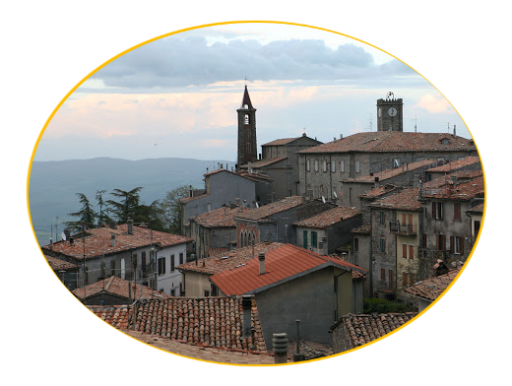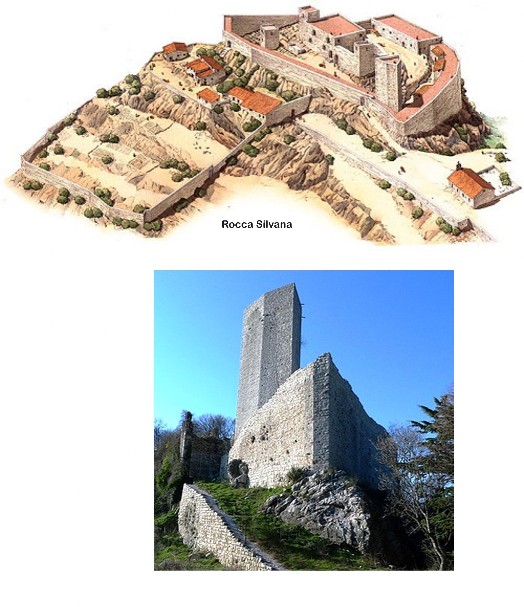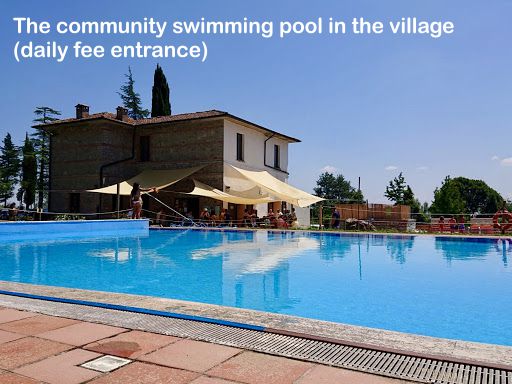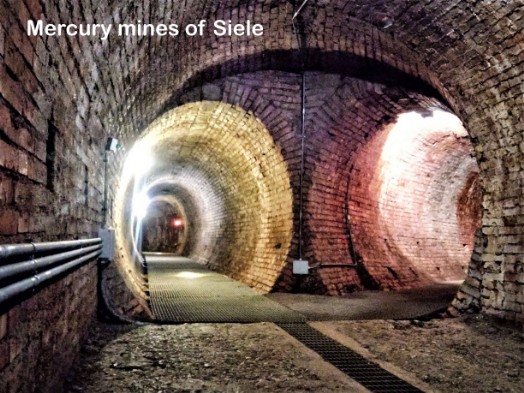
AN ANCIENT VILLAGE BETWEEN AMIATA, VAL D'ORCIA AND CRETE SENESI
At the foothills of Monte Civitella’s wooded territory you’ll find Castell’Azzara (Mount Amiata’s southwest sentinel), whose name supposedly derives by having been won by Bonifacio degli Aldobrandeschi over a game of dice (zara). Despite ending up in Aldobrandeschi hands, the area’s earliest settlements date to 1000 B.C.E. when the Umbri roamed the land, followed by the Etruscans from Sovana who ventured to the area to extract cinnabar for its mercury.



In case of interest in the visits, inquire in advance about days and opening hours:
Museum of mercury mines of Monte Amiata
Miners Association for the Museum
Piazza Garibaldi, 23-24
Santa Fiora, Telephone and Fax: +39 0564 978226
Museum of mercury mines of Monte Amiata
Miners Association for the Museum
Piazza Garibaldi, 23-24
Santa Fiora, Telephone and Fax: +39 0564 978226
The two fortresses defending Monte Civitella date to the Aldobrandeschi, while first records of the town’s name date to 1216 (documents cite the county's division into four sections).
The oldest part of town, known for its steep and winding streets, is best explored on foot. Once in town, don’t miss the Church of San Nicola, an age-old church restructured a number of times, where inside you’ll find a beautiful 17th-century canvas attributed to Sienese painters. Also worth visiting is the Church of Madonna del Rosario, home to a number of 16th and 17th-century paintings.
In the limestone area of Poggio delle Forche you’ll find Sassocolato Cave, a place once used as a barn and for important spelunking expeditions. In 1995, the cave was closed to protect its important bat colony, which can be visited in summer months (so as to not disturb the animals) with the “L’Orso” Speleological Group of Castell’Azzara.
From the ruins of Rocca Silvana you'll enjoy breathtaking views of Selvana and the area’s abandoned mines, not to mention the spectacular forests located along the flanks of Monte Civitella and other highlands. Be sure to check out Villa Sforzesca, an imposing country villa built in 1580 for Cardinal Alessandro Sforza. The recently restored building contains lovely gates, coats of arms, fortress remains and frescoes. You’ll find this structure at the crossroads between the provinces of Siena, Grosseto and Viterbo, immersed in the unmistakable countryside of the Crete Senesi.
The "Sassocolato Cave" is another interesting excursion: famous for its size and calcareous concretions (stalactites and stalagmites) it hosts large colonies of chiropteras or bats (12 different species) which in the summer reach a total of 2000, 2500 individuals. Due to man-made environmental changes, they have become one of the most threatened wildlife groups.
In addition to this cave there are others: the "Buca delle Nottole", the" Buca delle Capre", the "Grotta del Monte Civitella", also inhabited by bat colonies.
Finally, there are numerous mercury mines in the area and a short distance from Castell'Azzara, many of which can be visited. Among the most important are those of the Siele, in the locality of "Diaccialetto" along the Siele ditch, reachable by an unpaved road that starts from the Terni crossroads on the provincial road Santa Fiora-Castell'Azzara.

